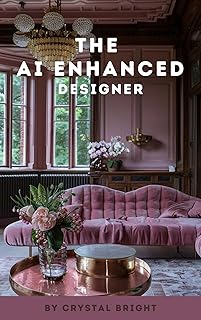Using ChatGPT for interior design has revolutionized the industry, offering a seamless blend of artificial intelligence and creative vision. The advancements in AI technology have made it possible for simple prompts to transform decor styles, lighting, and even basic plans into realistic renders and walk-throughs. This innovation has significantly enhanced the design process, allowing users to visualize spaces in a way that was previously unimaginable.
With the introduction of GPT-4o, ChatGPT underwent a significant upgrade in image-generation capabilities, making it more intuitive and responsive to conversational instructions. This enhancement has empowered users to communicate their design ideas more effectively, resulting in accurate and detailed visual representations. The evolution of ChatGPT has marked a milestone in the integration of AI in interior design, offering a user-friendly platform for creative exploration.
ChatGPT’s ability to generate visual concepts based on simple prompts has simplified the design process for professionals and enthusiasts alike. By describing specific details such as room dimensions, preferred colors, and lighting scenarios, users can receive tailored design suggestions that align with their vision. This personalized approach to interior design not only enhances creativity but also streamlines the decision-making process.
Moreover, ChatGPT serves as a valuable research assistant, providing insights into design trends, styles, and spatial arrangements. By asking targeted questions, users can gain a deeper understanding of design principles and make informed decisions about their spaces. This knowledge-sharing aspect of ChatGPT highlights its versatility as a tool for both creative inspiration and practical guidance.
For those seeking to optimize small spaces or refine furniture layouts, ChatGPT offers innovative solutions that maximize functionality and visual appeal. By describing room dimensions, existing furniture pieces, and usage preferences, users can receive tailored layout suggestions that enhance the flow and aesthetics of their space. This feature is especially beneficial for individuals looking to make the most of limited square footage.
Combining ChatGPT with professional design tools such as SketchUp and AutoCAD further enhances its capabilities, enabling users to create detailed 3D models and renderings. By leveraging AI-integrated workflows, designers can streamline the design process and visualize their concepts with precision. This integration of AI technology with traditional design tools represents a new frontier in interior design innovation.
Notable figures in the design industry, such as London-based architect Amir Hossein Noori, have demonstrated the transformative potential of ChatGPT in creating professional-grade interior renders. By sharing insights and tutorials on using AI for design projects, Noori and other design experts have showcased the practical applications of ChatGPT in real-world scenarios. Their work exemplifies the collaborative nature of AI in design, where technology serves as a creative partner rather than a replacement for human expertise.
As the use of AI in interior design continues to evolve, ethical considerations surrounding its application are paramount. Currently, ChatGPT offers a user-friendly and legally compliant framework for design projects, allowing users to retain ownership of their creations and use AI-generated designs for various purposes. This collaborative approach to design empowers users to explore new possibilities and experiment with innovative concepts while respecting intellectual property rights.
In conclusion, the integration of ChatGPT in interior design represents a paradigm shift in the way spaces are conceptualized and visualized. By leveraging AI technology to generate creative ideas, streamline workflows, and enhance design outcomes, users can unlock a world of possibilities in the realm of interior styling. As AI tools continue to advance, the future of interior design holds immense potential for innovation and creativity.
📰 Related Articles
- Spotify Embraces AI in Music Innovation and Artist Empowerment
- Reviving Retro: Embracing Vintage Style in Modern Interior Design
- Pinterest’s AI Tool Transforms Women’s Fashion Searches for Personalized Style Discovery
- Mitsubishi Electric Invests in AI Startup for Manufacturing Innovation
- Microsoft Job Cuts Signal Shift Towards AI Innovation






